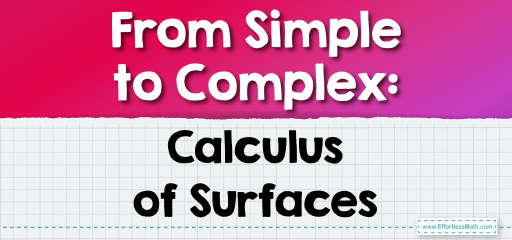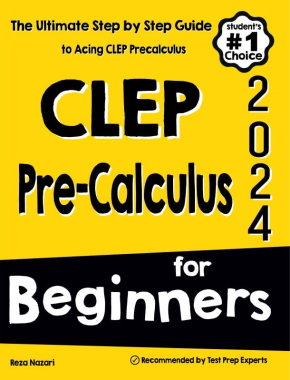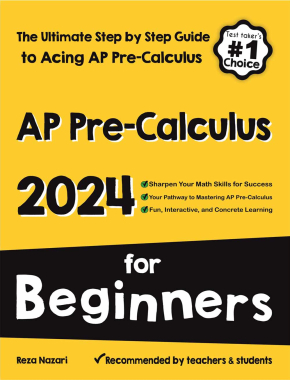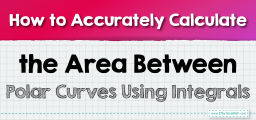From Simple to Complex: Calculus of Surfaces
Using calculus to calculate surface area involves applying integral formulas to measure the exterior of 3D objects. This approach breaks down complex surfaces into infinitesimal elements, simplifying their total area calculation. It's crucial for understanding the geometry of diverse shapes, from simple spheres to intricate structures, facilitating applications in engineering, architecture, and science. Calculus offers a precise tool for quantifying the boundaries of any shape, regardless of its complexity.

The calculus-based surface area determination extends beyond mere mathematical curiosity, serving as a foundational concept in material science for optimizing coatings and in aerodynamics for reducing drag. By integrating over curves or surfaces, calculus enables precise surface area estimations for objects whose dimensions defy simple geometric categorization. This method supports innovative design and manufacturing processes, including 3D printing and CNC machining, where accurate surface measurements are pivotal. Furthermore, it aids in environmental modeling, predicting surface interactions with phenomena like light absorption and heat transfer.
To calculate the surface area \(S\) of a solid of revolution using calculus, we follow these general steps, focusing on a solid revolved around the x-axis:
- Identify the Generating Curve: Let \(f(x)\) be a continuous, non-negative function on the interval \([a, b]\).
- Formula for Surface Area:
- The surface area of the solid formed by revolving \(f(x)\) around the x-axis from \(a\) to \(b\) is given by:
\( S = 2\pi \int_{a}^{b} f(x) \sqrt{1 + \left(\frac{dy}{dx}\right)^2} \, dx \) - Here, \(\frac{dy}{dx}\) is the derivative of \(f(x)\), representing the slope of the tangent to the curve at any point \(x\).
- Derive the Integral:
- Calculate \(\frac{dy}{dx}\) for \(f(x)\).
- Substitute \(\frac{dy}{dx}\) into the surface area formula.
- Ensure the function and its derivative are properly defined over the interval \([a, b]\) to avoid any discontinuities or points of non-differentiability.
- Evaluate the Integral:
- Compute the integral either analytically or numerically, depending on the complexity of the function and its derivative.
- The result gives the total surface area of the solid of revolution.
This method relies on the principle that the surface area can be approximated by summing up the lateral areas of infinitesimally thin cylindrical shells created by small segments of the curve as it revolves around the axis. The precision of calculus allows for the accurate calculation of surface areas for a wide range of shapes, providing essential insights in both theoretical and applied contexts.
Let’s calculate the surface area of a solid formed by revolving the curve \( y = e^x \) around the x-axis, from \( x = 0 \) to \( x = 1 \).
Step-by-Step Solution:
- Function and Interval:
- The generating curve is \( y = e^x \), defined from \( x = 0 \) to \( x = 1 \).
- Derivative of the Function:
- The derivative of \( y = e^x \) is \( \frac{dy}{dx} = e^x \).
- Formula for Surface Area:
- The formula to calculate the surface area \( S \) is:
\( S = 2\pi \int_{0}^{1} e^x \sqrt{1 + (e^x)^2} \, dx \)
- Evaluate the Integral:
- This requires integrating \( e^x \sqrt{1 + e^{2x}} \) from \( x = 0 \) to \( x = 1 \).
Let’s perform the integration to find the surface area.
The surface area of the solid formed by revolving the curve \( y = e^x \) around the x-axis, from \( x = 0 \) to \( x = 1 \), is approximately \(22.94\) square units.
Related to This Article
More math articles
- 3rd Grade SBAC Math FREE Sample Practice Questions
- FREE SSAT Middle Level Math Practice Test
- How to Find Volume by Spinning: Disk Method
- CLEP College Math Practice Test Questions
- Best Graphing Calculators for High School Students
- Top 10 TASC Math Practice Questions
- Full-Length PSAT Math Practice Test-Answers and Explanations
- The Ultimate HSPT Math Formula Cheat Sheet
- How to Find Angles as Fractions of a Circle
- Top 10 7th Grade MEAP Math Practice Questions
















What people say about "From Simple to Complex: Calculus of Surfaces - Effortless Math: We Help Students Learn to LOVE Mathematics"?
No one replied yet.